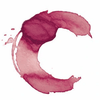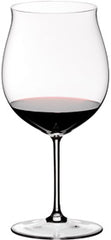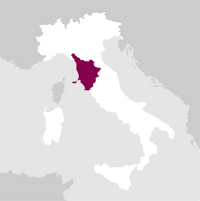Description
The grapes come from the vineyards Rancia Piccola and Poggiolo, the first also called Mastro Raro, adjacent and similar to that of Rancia. The best-known and most widely-planted red grape in the world, Cabernet Sauvignon, was planted here, right in the locus of the Felsina terroir at its most classic. First vintage 1987.
Awards
Details

Perfume

Color

Taste
Serve at:
18 - 20 °C.
Longevity:
10 - 15 years
Decanting time:
1 hour

Pairings
- Start up year: 1966
- Oenologist: Franco Bernabei
- Bottles produced: 550.000
- Hectares: 72
In the second half of the 1970s Giuseppe Mazzocolin entered the family business with the task of commercial development. His studies in the Humanities, his wealth of contacts, his elevated work ethic and his respect for Tuscan and Italian culture constitute the foundation for the growth of the Fèlsina winery, paving the way for the beginnings of their international recognition.
Their friendship with Luigi Veronelli and collaboration with oenologist Franco Bernabei shaped a developmental strategy that has proven itself extremely coherent starting with the wines of 1983, the first year of Fontalloro and of Rancia, up to the present day. With Domenico and Giuseppe Poggiali at the helm, an extraordinary development began which, since 1990, also includes Giovanni Poggiali, the oldest of Giuseppe’s three son Read more


| Name | Felsina Maestro Raro Cabernet Sauvignon 2020 |
|---|---|
| Type | Red still semi-aromatic |
| Denomination | Toscana IGT |
| Vintage | 2020 |
| Size | 0,75 l |
| Alcohol content | 13.5% by volume |
| Grape varieties | 100% Cabernet Sauvignon |
| Country | Italy |
| Region | Tuscany |
| Vendor | Felsina |
| Origin | Castelnuovo Berardenga (SI) |
| Cultivation system | Simple Guyot. |
| Plants per hectare | About 5,400 vines per hectare. |
| Harvest | Only hand picked. |
| Fermentation temperature | 28-30 °C |
| Wine making | After the quality-selected clusters are de-stemmed and pressed, the must is fermented and macerated in stainless steel for 16-20 days at 28°C and 30°C, with programmed punchdowns and daily pumpovers. |
| Aging | In March-April, the new wine goes into new French oak barrels; after 18-20 months of maturation, the final blend is assembled, bottled, and ages in glass a minimum of 8 0 months. |
| Allergens | Contains sulphites |










